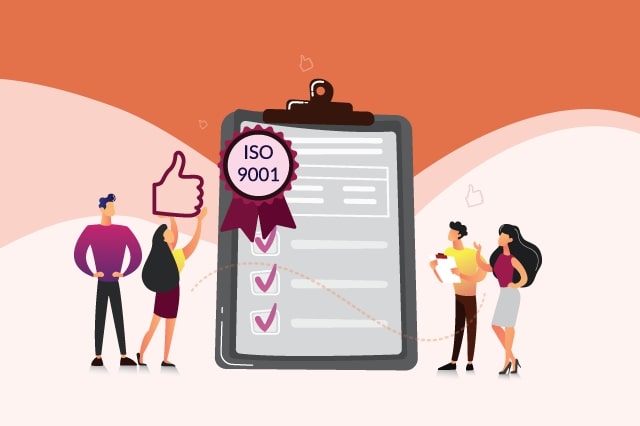
One type of standard that ISO develops is a process standard. A process standard outlines the steps and requirements that a company or organization should follow in order to achieve a specific outcome or goal.
Summary
Many organizations today want to implement processes, policies & standards of operations which would help companies to maintain standardization, quality, and process in place. Usually, most of the processes or policies are executed without any plan or guidance which would sometimes or most of the time result in diluting the importance as there is no frequent monitoring and improvements in place. There are so many disadvantages to these sorts of systems and practices. Want to know the advantages of ISO and get certified to have good practices and systems in place? Go through my content below for the easier steps and procedure to obtain the ISO certificate in less than 45 days…
Reasons why organizations should implement ISO
The advantage of getting ISO certified in the organization does help in the standardization of quality, policies, and processes in place, today even customers/vendors look for organizations that are certified for various reasons. This will also help the company to improve the quality of processes and services. Certain business metrics are useful for communicating the company's process, communicating, and understanding the system performance against the set goals. The honest attempt to qualify for ISO certification will help you learn more about your company and improve efficiency in the system providing tangible results, reduction in costs, and increasing profit.
Adhering to process standards can help organizations improve their operations and increase customer satisfaction. It also allows organizations to demonstrate their commitment to quality and continuous improvement.
Steps involved in the beginning stage of ISO certification:
1. Vendor Identification:
Once you finalize to go with ISO certification, you need to identify the right vendor who can help you throughout the process. Talking to multiple vendors with the right questions and their detailed proposals would help to identify and finalize the right vendor. Also, ensure to negotiate well for the certificate as well as for the support. Usually, the proposal will define all that is covered for obtaining the certificate, which includes the annual surveillance audit cost as well.
2. Core Team:
A representative from each department is required to provide complete information especially related to policy, process, operating procedures, etc... The core team is also required for internal audits as well as being an internal auditor for other departments as well.
3. Identify Gaps:
Once the vendor and core team are finalized, the ISO team (vendor) would do a gap analysis which means the required process vs the followed process. During the meeting, the ISO team will ask relevant questions to each department head/representative to provide necessary data/information. All the missing data/information would be considered as gaps and the ISO team will ask the team to come up with certain documents as per the compliance process that is required to fill the gaps.
4. Internal Audit:
For regular internal audits there should be an Internal Audit team which needs to be finalized in the initial stage itself, remember you have already identified this during the core team finalization. This team needs to be available during the audit process as prescribed the by ISO lead. Usually, a quarterly audit in the initial stage would be recommended to ensure the process is followed as per ISO compliance. conducted by an internal team that is identified by the ISO Leader/management. Internal auditors are to be trained by the ISO lead to ensure the audit goes as per the ISO process.
Let’s look at those steps that will help us to get the certification successfully.
5. External Audit:
This is usually organized by the ISO vendor after we are ready with all the required documents as per the ISO compliance and satisfied with all the previous four points. The external audit team would organize the audit, the ISO lead should keep all the department head informed about the same and ensure everyone is available on the day of the audit to represent their departments. The detailed audit will go through with the standard questionnaire, each department head is supposed to provide the facts and proofs as per the auditor’s questions, in case of any non-compliance during the audit, the auditor may give some time and ask you to complete the same and reschedule the audit. If it satisfies all the needs then he might recommend your company for certification.
6. Certification:
Once you complete the external audit successfully, the auditor will give the clearance and the certificate would be sent to your mailing address within 7-10 working days. You may have to give the clear information that needs to be printed on the certificate, like company name, full address, services or products offered, etc. The certificate needs to be displayed in the reception area/notice board and to be renewed upon expiry.
7. Ensure frequent and regular audits:
As you all know for sustaining the policy or process there should be regular monitoring and audit going on otherwise it might lose its importance and value. To ensure compliance and sustained quality across all departments, ensure to have frequent audits, it can be done quarterly in the initial stage and moved to half yearly at the later stage. Frequent internal audits will help you to improvise the process, policy, and quality across the department.
Hope this article was useful for you to know about ISO and its importance.
About Author:
Anthony Vincent, working as Operations Manager at Chimera Technologies, hobbies are playing musical instruments keyboard, rhythm pad, and guitar.


